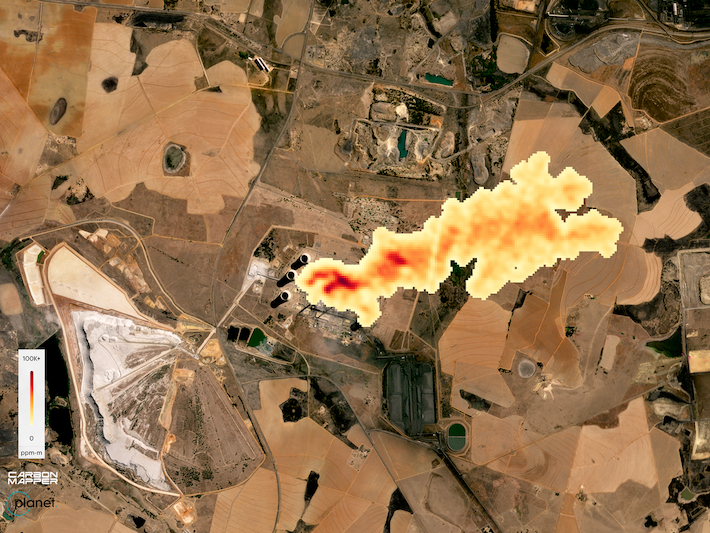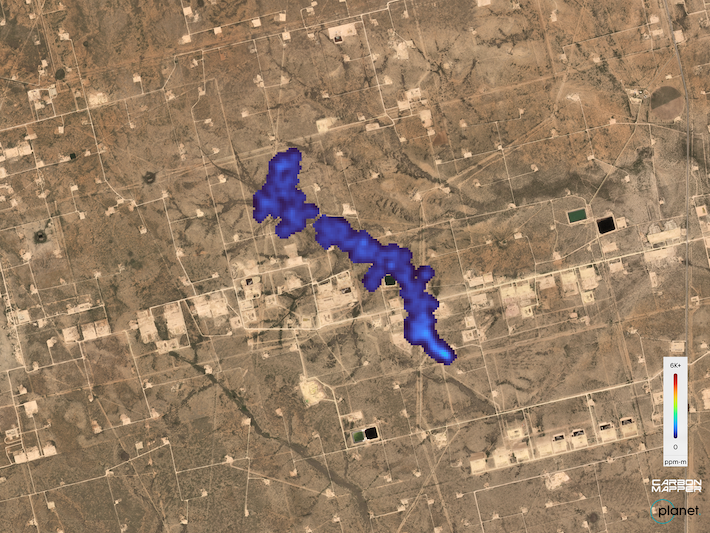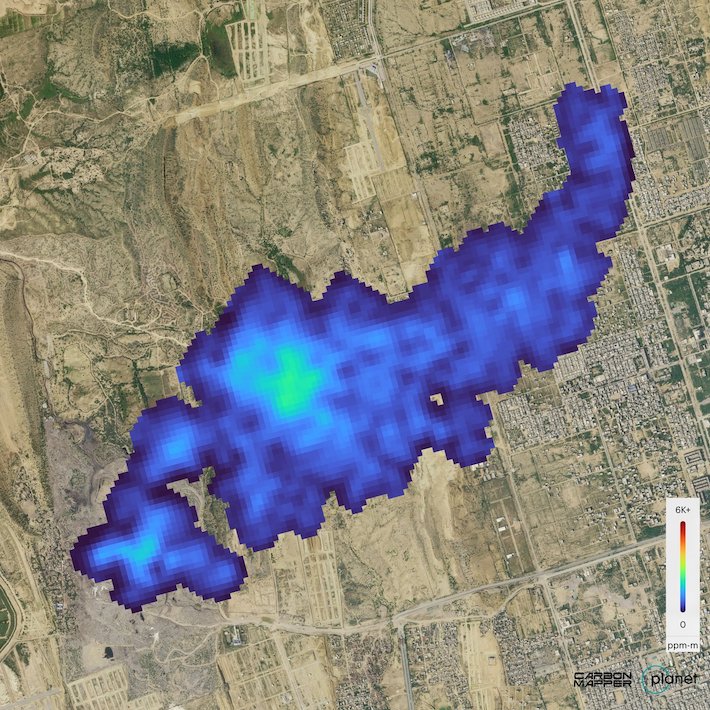NASA has revealed the first images from a new satellite launched in mid-August, which has special instruments for detecting methane and CO2 emissions.
An imaging spectrometer aboard the Carbon Mapper Coalition’s Tanager-1 satellite identified both methane and carbon dioxide plumes in different parts of the world.
Earlier this month NASA’s Jet Propulsion Lab in California posted images on its website of three locations where it detected serious emissions – in Asia, Africa and Texas in the United States.
ALSO SEE: Could Melting Glaciers Trigger Volcanic Eruptions? – Reuters
Scientists at NASA have been helping non-profit groups monitor methane and other emissions via aircraft and satellite instruments.
They have found methane and CO2 plumes rising from landfill sites, oil and gas production sites and coal power plants.
“In some cases, these measurements have led to leaks being fixed, including suburban gas leaks and faulty equipment in oil and gas fields,” NASA said on one of its websites.
Images obtained by the Tanager-1 satellite revealed methane plumes over a waste site in Karachi, Pakistan (see above), a coal power station in South Africa and a smaller plume over an oilfield in Texas (both seen below).

NASA said Tanager-1 satellite – “enabled by Carbon Mapper and built by Planet Labs PBC” – was launched from Vandenberg Space Force Base in California on August 16.
“It has been collecting data to verify that its imaging spectrometer, which is based on technology developed at NASA JPL, is functioning properly,” the website said. “Both Planet Labs PBC and JPL are members of the philanthropically funded Carbon Mapper Coalition.”
‘A sign of things to come’
“The first greenhouse gas images from Tanager-1 are exciting and are a compelling sign of things to come,” James Graf, director for Earth Science and Technology at JPL, said.
“The satellite plays a crucial role in detecting and measuring methane and carbon dioxide emissions. The mission is a giant step forward in addressing greenhouse gas emissions.”
The website said Carbon Mapper’s preliminary estimate for the Karachi landfill site was a “methane emissions rate of more than 2,600 pounds (1,200 kilograms) of methane released per hour.”
Carbon Mapper’s preliminary estimate of the CO2 emissions rate at the South African coal power plant “is roughly 1.3 million pounds (600,000 kilograms) of carbon dioxide per hour.”

The Texas image, seen here, reveals a methane plume south of the city of Midland, in the Permian Basin, one of the largest oilfields in the world.
NASA said: “Carbon Mapper’s preliminary estimate of the source emissions rate is nearly 900 pounds (400 kilograms) of methane per hour.
“The data contributes to Carbon Mapper’s goal to identify and measure greenhouse gas point-source emissions on a global scale and make that information accessible and actionable.”
NASA said its “spacecraft” will be able to scan about 116,000 square miles (300,000 square kilometres) of the Earth’s surface a day, once it is in full operation.
Methane and carbon dioxide measurements collected by Tanager-1 will be publicly available on the Carbon Mapper data portal, it said.
Carbon Mapper is a non-profit focused on achieving timely action to mitigate greenhouse gas emissions.
“Its mission is to fill gaps in the emerging global ecosystem of methane and carbon dioxide monitoring systems by delivering data at facility scale that is precise, timely, and accessible to empower science-based decision making and action,” it said.
It is leading the development of a “constellation of satellites” supported by a public-private partnership composed of Planet Labs, JPL, the California Air Resources Board, Arizona State University, and RMI, with funding from High Tide Foundation, Bloomberg Philanthropies, Grantham Foundation for the Protection of the Environment, and other donors.”
Landfill sites a serious concern
The image from the Karachi landfill site confirms that efficient management and disposal of waste in cities and towns all over the world – is an area that local authorities urgently need to focus on.
Methane is one of the most potent greenhouse gases, and the second largest contributor to global warming after carbon dioxide.
The largest sources of methane are agriculture, use of fossil fuels (where oil and gas is extracted), and decomposition of waste at landfill sites.
Natural processes – such as cattle and sheep – account for 40% of methane emissions, although wetlands are the largest natural source. The Arctic is a source of natural methane from wetlands, and perhaps thawing permafrost.
NASA says about 60% of methane emissions are caused by humans.
Agriculture and livestock emissions account for roughly a third of those. And that has led to calls for farmers to change the food they feed to cattle and for people to eat a more plant-based diet.
- Jim Pollard
ALSO SEE:
Funding Gap Hurts Climate Talks While World Faces 3.1C Warming
Climate Change Has Cost China $32 Billion in Just One Quarter
Scientists Fear Nature’s Carbon Sinks Are Failing – Guardian
Floods or Drought: Climate Change Worsens Global Water Woes
Climate Change ‘Fuelled’ Rain That Led to Fatal Indian Landslides
Energy Emissions Set to Peak But ‘Not in Time’ For Climate Goals
LNG’s Carbon Footprint 33% Bigger Than Coal’s – CC
























